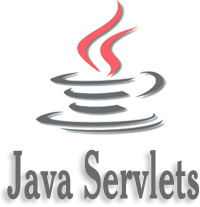-
Servlet Tutorial
- what-is-servlet
- web-terminology
- servlet-api
- servlet-interface
- genericservlet
- httpservlet
- servlet-life-cycle
- servlet-example
- how-servlet-works?
- war-file
- welcome-file-list
- load-on-startup
Servlet Advance Session Tracking
Servlets | Servlet Tutorial Servlet technology is used to create a web application (resides at server side and generates a dynamic web page). Servlet technology is robust and scalable because of java language. Before Servlet, CGI (Common Gateway Interface) scripting language was common as a server-side programming language. However, there were many disadvantages to this technology. We have discussed these disadvantages below. There are many interfaces and classes in the Servlet API such as Servlet, GenericServlet, HttpServlet, ServletRequest, ServletResponse, etc. What is a Servlet?Servlet can be described in many ways, depending on the context.
What is a web application?A web application is an application accessible from the web. A web application is composed of web components like Servlet, JSP, Filter, etc. and other elements such as HTML, CSS, and JavaScript. The web components typically execute in Web Server and respond to the HTTP request. CGI (Common Gateway Interface)CGI technology enables the web server to call an external program and pass HTTP request information to the external program to process the request. For each request, it starts a new process. Disadvantages of CGIThere are many problems in CGI technology:
Advantages of ServletThere are many advantages of Servlet over CGI. The web container creates threads for handling the multiple requests to the Servlet. Threads have many benefits over the Processes such as they share a common memory area, lightweight, cost of communication between the threads are low. The advantages of Servlet are as follows:
Servlets IndexServlet Tutorial
Servlet with IDE ServletRequest Servlet Collaboration ServletConfig ServletContext Attribute in Servlet Servlet Advance Session Tracking
Event and Listener
Servlet Filter Servlet CRUD Servlet Pagination Servlet Miscellaneous Development
Servlet Basics Quiz
Servlet Advance Quiz Servlet Misc. Quiz Interview Questions |